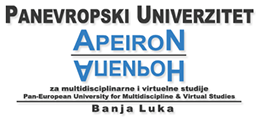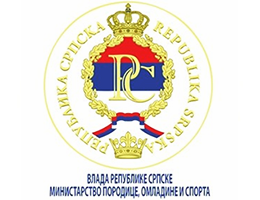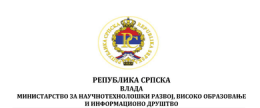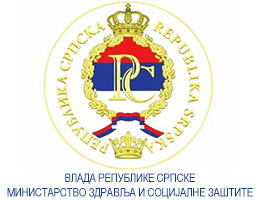Vannastavna fizička aktivnost dece starijeg školskog uzrasta i nivo kardiorespiratorne forme
Volume 4, Issue 2 (2014)
Volume 4, Issue 2 (2014)
Vannastavna fizička aktivnost dece starijeg školskog uzrasta i nivo kardiorespiratorne forme
Apstrakt:
Istraživanje sa ciljem procene vannastavne fizičke aktivnosti i fizičke forme sprovedeno je na uzorku od 333 učenika starijeg školskog uzrasta. Analize su sprovedene prema polu, školskom urastu i vannastavnoj fizičkoj aktivnosti. Učenici i učenice petih razreda su najmanje uključeni u vannastavnu fizičku aktivnost. Učenici su aktivniji u odnosu na učenice. Kod učenika i učenica koji nisu fizički aktivni vrednosti indeksa telesne mase su povišene (gojaznost kod fizički neaktivnih učenika je 5.2 – 6.2%, kod učenica 3.4 – 6.7%, dok je kod fizički aktivnih učenika 1.2-1.4%, i učenica 0.7-2.1%). Kod učenica, u svim analiziranim grupama zabeležena je gojaznost. Osim kod učenica petog razreda, između svih ostalih grupa ispitanika, zabeležena je statistički značajna razlika u odnosu na vrednosti kardirespiratorne forme, u korist ispitanika koji su imali vannastavnu fizičku aktivnost. Kardiorespiratorna forma je uglavnom ispod nivoa dobrih u odnosu na optimalne kriterijume.
Ključne riječi:
fizička forma, zdravlje, gojaznost, deca
Puni tekst:
Reference:
- American College of Sports Medicine (2009). Guidelines for Exercise Testing and Prescription, 8th ed. Philadelphia: Wolters Kluwer Health Ltd
- American College of Sports Medicine (2010). ACSM’s Health-Related Physical Fitness Assessment Manual 3rd edition. Philadelphia: Lippincott Williams & Wilkins
- Boreham, C.& Riddoch, C. (2001). The physical activity, fitness and health of children. Journal of Sports Sciences, 19(12), 915-929.
- Brooks, F. & Magnusson, J. (2006). Taking Part Counts: Adolescents' Experiences Of The Transition From Inactivity To Active Participation In School-Based Physical Education. Health Education Research, 21(6), 872-83.
- Burke, V. (2006). Obesity in childhood and cardiovascular risk. Clinical and Experimental Pharmacology and Physiology, 33, 831–837.
- Burke, V., Beilin, L.J., Simmer, K., Oddy, W.H., Blake, K.V., Doherty, D., Kendall, G.E., Newnham, J.P., Landau, L.I.& Stanley, F.J. (2005). Predictors of body mass index and associations with cardiovascular risk factors in Australian children: a prospective cohort study. International Journal of Obesity, 29(1), 15-23.
- Cameron, A.J., Welborn, T.A., Zimmet, P.Z., Dunstan, D.W., Owen, N., Salmon, J., Dalton, M., Jolley, D. & Shaw, J.E. (2003). Overweight and obesity in Australia: the 1999–2000 Australian diabetes, obesity and lifestyle Study. Тhe Medical Journal of Australia, 178, 427–432.
- Caspersen, C.J., Nixon, P.A.& DuRant, R.H. (1998). Physical activity epidemiology applied to children and adolescents. Exercise and Sport Sciences Reviews, 26, 341-403.
- Castelli, D.M., Hillman, C.H., Buck, S.M.& Erwin, H.E. (2007). Physical fitness and academic achievement in third- and fifth-grade students. Journal of Sport & Exercise Psychology, 29, 239–252.
- Cleland, V.J., Dwyer, T.& Venn, A.J. (2008). Physical activity and healthy weight maintenance from childhood to adulthood. Obesity,16, 1427–33.
- Cole, T.J., Bellizzi, M.C., Flegel, K.M.& Dietz, W.H. (2000).Establishing a standard definition for child overweight and obesity worldwide: international survey. British Medical Journal, 320, 1240-1243.
- Čizmić, M. (1992).Efekti dvonedeljnog programa individualno dozirane fizičke aktivnosti na insulinsku rezistenciju u gojaznih insulin-nezavisnih dijabetičara, Neobjavljeni magistarski rad. Beograd: Vojnomedicinska akademija.
- Di Pietro, L. (1999). Physical activity in the prevention of obesity: current evidence and research issues. Medicine and Science in Sports and Exercise, 31(11), 542-6.
- Dwyer, T., Magnussen, C.G., Schmidt, M.D., Ukoumunne, O.C., Ponsonby, A.L., Raitakari, O.T., Zimmet, P.Z., Blair, S.N., Thomson, R., Cleland, V.J. & Venn, A. (2009). Decline in physical fıtness from childhood to adulthood associated with increased obesity and insulin resistance in adults. Diabetes Care,34, 683–7.
- Đorđić, V. i Tumin, D. (2008). Da li su devojčice „problem“ u nastavi fizičkog vaspitanja? Pedagogija, 63(4), 652-665.
- Eurofit (1993).Eurofit Tests of Physical Fitness, 2nd Edition, Strasbourg.
- Ferreira, I., Twisk, J.W.R., Stehouwer, C.D.A., van Mechelen, W.& Kemper, H.C.G. (2003): Longitudinal changes in Vo2max: associations with carotid IMT and arterial stiffness, Medicine & Science in Sports & Exercise, 35, 1670–8.
- Gajević, A. (2009). Fizička razvijenost i fizičke sposobnosti dece osnovnoškolskog uzrasta. Beograd: Republički zavod za sport
- Goran, M.I.& Treuth, M.S. (2001): Energy expenditure, physical activity, and obesity in children. Pediatric Clinics of North America, 48 (4), 931-953.
- Guo, S.S., Huang, C., Maynard, L.M., Demerath, E., Towne, B., Chumlea, W.C. & Siervogel, R.M. (2000): Body mass index during childhood, adolescence and young adulthood in relation to adult overweight and adiposity: the Fels Longitudinal Study. International Journal of Obesity, 24, 1628–1635.
- Hardman, K. (2008). Physical education in schools: a global perspective, Kinesiology, 40(1), 5-28.
- Hardman, K. (2007).Current situation and prospects for physical education in the European Union. Brussels: European Parliament
- Hillman, C.H., Buck, S.M., Themanson, J.R., Pontifex, M.B.& Castelli, D.M. (2009). Aerobic fitness and cognitive development: Event-related brain potential and task performance indices of executive control in preadolescent children. Developmental Psychology, 45, 114–129.
- Hollmann, W. (1975). Sport i telesni trening kao preventive u kardiologiji. U: Rekreacija i masovni oblici fizičke kulture. Beograd: Sport indok centar, III, 47–54.
- Kamijo, K., Khan, N.A., Pontifex, M.B., Scudder, M.R., Drollette, E.S., Raine, L.B., Evans, E.M., Castelli, D.M. & Hillman, C.H. (2012а). The relation of adiposity to cognitive control and scholastic achievement in preadolescent children. Obesity, 12, 2406-11.
- Kamijo, K., Pontifex, M.B., Khan, N.A., Raine, L.B., Scudder, M.R., Drollette, E.S., Evans, E.M., Castelli, D.M. & Hillman, C.H. (2012b). The association of childhood obesity to neuroelectric indices of inhibition. Psychophysiology, 10, 1361-71.
- Karila, C., Blic, J., Waerbessyckle, S., Bernoist, M.& Scheinmann, P. (2001). Cardiopulmonary exercise testing in children: an individualized protocol for workload increase. Chest 120, 81-7.
- Lee, I.M., Paffenbarger, R.S., Jr.& Hennekens, C.H. (1997). Physical activity, physical fitness and longevity. Aging (Milano), 9(1-2), 2-11.
- Malina, R.M. (1996). Tracking of physical activity and physical fitness across the lifespan. Research Quarterly for Exercise and Sport, 67(3), 48-57.
- Mesa, J.L., Ruiz, J.R., Ortega, F.B., Warnberg, J., Gonzalez-Lamuno, D., Moreno, L.A., Gutierrez, A. & Castillo, M.J. (2006a). Aerobic physical fitness in relation to blood lipids and fasting glycaemia in adolescents: Influence of weight status. Nutrition, Metabolism & Cardiovascular Diseases; 16, 285– 293.
- Mesa, J.L., Ortega, F.B., Ruiz, J.R., Castillo, M.J., Hurtig, Wennlöf, A. & Gutiérrez, A. (2006b). The importance of cardiorespiratory fitness for healthy metabolic traits in children and adolescents. The AVENA Study, Jоurnal of Public Health, 14, 178 –180.
- Mikalački, M., Čokorilo, N. & Pantelić, S. (2006): Povezanost fizičke aktivnosti dječaka i njihovih roditelja sa odnosom roditelja prema fizičkoj aktivnosti. U Bala, G. (ur.), Antropološki status i fizička aktivnost dece i omladine (265-269). Novi Sad: Fakultet sporta i fizičkog vaspitanja.
- Moore, L.L., Nguyen, U.S., Rothman, K.J., Cupples, L.A.& Ellison, R.C. (1995): Preschool physical activity level and change in body fatness in young childen. the Framingham Children’s Study. American Journal of Epidemiology, 142 (9), 982-8.
- Ostojić, S.M., Stojanović, M.D., Stojanović, V., Marić, J., Njaradi, N. (2011). Correlation between Fitness and Fatness in 6-14-year Old Serbian School Children. Journal of Health Population Nutrition, 29(1), 53 – 60.
- Paffenbarger, R.S., Jr., Hyde, R.T., Wing, A.L.& Hsieh, C.C. (1986).Physical activity, all-cause mortality, and longevity of college alumni. The New England Journal of Medicine, 314(10), 605-613.
- Power, C., Lake, J.K. & Cole, T.J. (1997).Measurements of long-term health risks of child and adolescent fatness. International journal of obesity and related metabolic disorders, 21, 507–526.
- Pretience, A.M.&Jebb, S.A. (1995). Obesity in Britain: Gluttony or Sloth? British Medical Journal, 311(7002), 437-9.
- Ruiz, J.R., Rizzo, N., Wennlof, A., Ortega, F.B., Harro, M.& Sjostrom, M. (2006a). Relations of total physical activity and intensity to fitness and fatness in children; The European Youth Heart Study. The American Journal of Clinical Nutrition, 84, 299 – 303.
- Ruiz, J.R., Ortega, F.B., Meusel, D., Harro, M., Oja, P.& Sjöström, M. (2006b). Cardiorespiratory fitness is associated with features of metabolic risk factors in children. Should cardiorespiratory fitness be assessed in a European health monitoring system? The European Youth Heart Study, Journal of Public Health, 14, 94 – 102.
- Saltin, B.& Rowel, L. (1980).Functional adaptations to physical activity and inactivity. Federation of American Societies for Experimental Biology, 38, 1506–13.
- Scruggs, P.W., S.K. Beveridge, P.A. Eisenman, D.L. Watson, B.B. Shultz & Ransdell, L.B. (2003). Quantifying physical activity via pedometry in elementary physical education. Medicine of Sport and Exercise, 35, 1065-1071.
- Sibley, B.A.& Etnier, J.L. (2003). The relationship between physical activity and cognition in children: a meta-analysis. Pediatric Exercise Science, 15, 243-256.
- Steptoe, A.& Butler, N.(1996). Sports participation and emotional wellbeing in adolescents. Lancet, 347(9018), 1789-1792.
- Tsigos, C., Hainer, V., Basdevant, A., Finer, N., Fried, M., Mathus-Vliegen, E., Micic, D., Maislos, M., Roman, G., Schutz, Y., Toplak, H.& Zahorska-Markiewicz, B. (2008). Management of Obesity in Adults: European Clinical Practice Guidelines, Obesity Facts, 2, 106-16.
- Tubić, T. (2006). Neki psihološki aspekti bavljenja fizičkim aktivnostima dece od 4 do 10 godina. U Bala, G. (ur.), Antropološki status i fizička aktivnosт dece i omladine (271-279). Novi Sad: Fakultet sporta i fizičkog vaspitanja.
- Vilhjamsson, R. & Thorlindsson, T. (1998). Factors related to physical activity: a study of adolescents. Social Science and Medicine , 47(5), 665-675.
- Wedderkopp, N., Froberg, K., Hansen, H.S., Riddoch, C.J.& Andersen, L.B. (2003). Cardiovascular risk factors cluster in children and adolescents with low physical fitness: The European Youth Heart Study (EYHS). Pediatric Exercise Science, 15, 419-427.
- Weiner, J.& Lourie, J. (1969). Human Biology, A Guide to Field Methods. International Biological Program, Oxfordand Edinburgh: Blackwell Scientific Publications
- Whitaker, R.C., Wright, J.A., Pepe, M.S., Seidel, K.D. & Dietz, W.H. (1997). Predicting obesity in young adulthood from childhood and parental obesity. The New England Journal of Medicine; 337, 869–873.
- World Health Organization (2000). Obesity: preventing and managing the global epidemic. Report of a WHO consultation. World Health Organization Technical Report Series, 894, 1-253.






